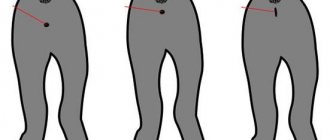Whether or not to castrate a cat is up to every owner of a furry pet. If your pet came into the family from a very young age, you can schedule surgery by choosing a certain age for this.
If the cat ends up with the new owners as an adult, was picked up on the street or taken from a shelter, and the new happy owners want to protect themselves and their new pet from many troubles in the future, that is, castrate it, you first need to make sure that this has not been done yet. How can you check whether a cat was neutered or not if there is no reliable information about his former place of residence? Below are some tips on how to do this.
Optimal age
Of course, a lot depends on the breed and individual characteristics of the animal. There are no specific deadlines for neutered cats. The average period of puberty in cats is 7-11 months. In any case, it will not be a mistake if the operation occurs a year later. This time is enough to avoid health problems in the future.
Castration, like any intervention in the body, brings certain hormonal and behavioral changes.
In any case, the sex life of your beloved pet will be a surprise for the owner. Even if the cat lives in an apartment and leads a passive lifestyle. An animal cannot resist its instincts and get carried away by a cat during a walk or run away on the street when arriving in a village or dacha.
Timely castration will avoid unnecessary frustration and loud cat concerts. Calls to search for a cat may be accompanied by aggressive behavior, uncontrolled marking of territory and loud meowing.
For clarity, we note obvious signs when a cat should be castrated and the maximum age for surgical or other intervention in natural processes:
- The cat has noticeably lost weight. It is worth keeping in mind adjustments for the time of year and breed. Cats, as a rule, lose weight closer to spring and summer because... There is no urgent need to maintain fat reserves. The animal refuses its favorite treats.
- Changes in behavior, mood. The cat snaps, behaves aggressively even with children, can “swear” at his favorite toys and damage furniture.
- The cat sleeps less and becomes restless. Night activity increases significantly, which causes problems for the owners.
- The cat watches the owners at the front door, meows loudly, and tries to sneak out into the street.
- The pet may rub its body parts against various objects. The emphasis will be heavily on the genitals and the fifth hairy point.
- Active marking of territory begins in the most unexpected and inappropriate places.
In general, a cat can be castrated up to the age of 3 years. But you shouldn’t delay or postpone the operation. Each time the pet’s mood and behavior will worsen. Even special tablets and drops will not help.
ATTENTION! There is an opinion among owners that a cat should be castrated only after the first mating. This is true for cats, but with males the situation is somewhat different. A cat that has satisfied its physical needs and then is deprived of this opportunity may experience enormous stress in the future.
Possible complications
A classic cat castration operation lasts no more than 20 minutes. The recovery period is usually short; the pet recovers from anesthesia in an average day. Veterinarians recommend monitoring the animal for two days after surgery, monitoring how the cat behaves after castration, and not leaving it alone. This is due to the use of anesthesia, the side effects of which may appear during this time.
Some negative consequences of the operation are possible within 2-3 weeks after the intervention.
In what cases is it important to take your cat to the veterinarian:
- Bleeding. Occurs when the seams come apart. The blood flows in a thin stream and stains the fur. Treatment is surgical, so it is important to contact a veterinary clinic as soon as possible.
- Purulent inflammation. Possibly if the wound has become infected. Pus appears green, yellow, white, thick, with an unpleasant odor. Such a consequence is treated with antibiotics.
- Edema. It can develop if dirt or infection is brought into the wound. The scrotum swells, and the animal often experiences pain.
- Hernia. This is tissue loss that can occur, especially if the cat is older. The hernia is removed surgically; it is strictly forbidden to repair it yourself.
- Sepsis. Appears after a secondary complication after inflammation, hernia and other pathologies. At the same time, bacteria enter the blood and the temperature rises. Antibiotics are used for treatment.
- Pulmonary edema. The phenomenon is rare, but extremely dangerous. Due to heart failure, pressure in the pulmonary circulation increases, plasma enters the lungs, and oxygen supply decreases. The animal wheezes, coughs, and turns blue. If you don't get veterinary help quickly, the cat will suffocate.
Advantages, disadvantages, consequences
To reassure doubting owners (after all, castration is a responsible procedure!) Let’s consider the positive and negative aspects of outside intervention:
- Arguments for". The cat stops screaming and demanding to be let out into the street. Behavior becomes calmer and more balanced. Life expectancy increases by several years. The risk of serious diseases, including inflammation or testicular cancer, is reduced. Changes in the coat are possible. She becomes brighter and more tender.
- Arguments against". Careful monitoring of nutrition after castration. A special diet for several weeks is possible. Anesthesia affects the animal's body. After surgery, the cat may feel lethargic and apathetic. The effect wears off in the worst case after 24 hours. There are hormonal changes that can affect the correct excretion of urine. As a consequence, the development of urolithiasis.
It is important to understand that any decision must be made. You can consult with experienced breeders or a veterinarian. If the owner is ready to put up with night concerts and the smell of urine that will fill the entire apartment, then it’s not worth it. In any case, castration very rarely carries negative aspects and is painless for the pet.
Numerous reviews from owners of neutered cats are replete with stories that the cat begins to intensively care for itself, licks itself more often, and becomes kinder. Everything is again strictly individual. According to one foreign study, about 45% of cats behave exactly the same as before the operation.
ATTENTION! It is reliably known and proven by the experience of many owners that the odor of urine becomes noticeably less
From 2-5 years
It happens that a cat ends up with its owners as an adult. If there are no contraindications, cats can be neutered at this age. You shouldn't expect much effect from the manipulation. The cat's body developed under the influence of sex hormones.
Castration of an adult pet will not solve problems with marking the premises with urine, attempts to escape from the house and regular howling. Unfortunately, it is almost impossible to correct the habits and behavior of an older cat.
The disadvantages outweigh the benefits of the intervention
- Risk of physical inactivity.
- Gaining excess weight. Corrected by a specially selected diet
The operation is performed only under general anesthesia.
How to distinguish a neutered cat
Let's move on to the moment that will allow you to find out whether the cat is neutered or not. For clarity, we will divide the process into several stages.
Preparatory stage
- First, you should calm your pet. The test should not be carried out if the pet has just eaten, played or slept. Gently pick up the cat and lift his tail to examine his genitals. It is best if there are two of you and an assistant will hold the cat. In most cases, the animal will experience discomfort and anxiety. Perhaps he will try to scratch the owner.
- It is important to pat the cat on the back and talk to it. Perhaps the cat raises its tail on its own and will make it easier to identify. At the very least, the pet will calm down for a while.
- For personal hygiene, be sure to use gloves. They should not be thick so that the pet can be easily felt.
- Some problem occurs in long-haired breeds. In order to get to the genitals, the fur must be removed. By spreading the fur between the paws, you can see the cat's penis and anus.
- You should touch the cat carefully so as not to hurt the animal. If the cat is docile and obedient, you can put the cat on its back. This will make it easier to identify.
Checking the genitals
After castration (pictured), the cat has no testicles. This is the main sign by which the sexual activity of an animal can be determined.
IMPORTANT! Under the tail is the scrotum, it resembles a small pouch. Take it in your hands. Feel carefully.
If you feel small testicles, then the cat is not neutered with a 99.9% probability.
If the sac is soft, then the cat has undergone surgery. Let us note some nuances of the definition:
- There is no bag, which means the cat underwent surgery a long time ago, and it was deflated.
- One testicle is palpable. The cat is not neutered.
- It is possible that the cat is young and his testicles have not yet descended. It is also possible to suspect cryptorchidism - a disease when the testicles do not descend into the scrotum.
- Scars around the genitals are a clear sign of castration.
Other determination methods
If the owner does not have the opportunity or desire to use the above method, then there are a number of other methods:
- Measuring the distance between the anus and penis. You can use a ruler to measure the distance between the anus and penis. If the distance is more than 2.5 cm, there is a high probability that the cat is neutered. At a young age, the distance is 1.2 - 1.3 cm.
- Ask the former owners. The easiest way with minimal cost. Basic communication skills required. No need to be shy. A simple question to the former owners will save you from many problems and surprises in the future. If the pet is purebred, then there will definitely be a package of documents for it. There, among other things, it will be indicated whether the cat is neutered or not.
- Fur on the belly. You can pay attention to the lower abdomen. The fur there will be shaved. As a rule, for convenience, the veterinarian will shave off some of the cat's hair. The method is quite specific and does not provide a 100% guarantee. It is better to combine it with others for authenticity.
- Smell of urine. The urine of uncastrated cats has a persistent and very unpleasant odor. It may be difficult to understand the first time, but, as a rule, the smell of urine from neutered cats does not cause a negative reaction.
- Examination of the ears. If a cat is picked up from the street or taken from a shelter, pay attention to his ears. Often sterilized cats have a special mark. But, unfortunately, this method is not common in Russia. Shelters and volunteers simply do not have the ability to tag stray, sterilized cats.
- Contact an experienced breeder, friend or veterinarian. The latter person is preferable because, due to the specifics of the work, he can easily distinguish a castrated cat from an uncastrated one (see photo).
As it has become clear in practice, there are many ways to determine whether a cat is neutered or not. Some of them are more accurate, others are considered indirect signs. One way or another, caution, love and understanding for the cat will allow the owner to make the right choice.
Adult animals
Cat and cat
Just like in humans, there is a “war of the sexes” in the cat world. Cats are as different from cats as day is from night. Experienced cat owners know this, so they advise taking home a kitten of the gender whose character traits are more suitable for the owner.
It is important to understand that character “manifests itself” only at the age of puberty. Therefore, until seven or eight months you will be able to evaluate the kitten’s sociability and mobility, but you will not see the characteristics characteristic of each sex.
Habits characteristic of different sexes:
- Cats are lazier. They love to cuddle on the sofa and on their owner's lap. The cat is more likely to be cuddled and hugged. Cats tolerate such caresses less often.
- Cats love solitude. By taking a murka into your home, you sign a cohabitation agreement. It will be difficult to teach a female to sit on your lap, because girls have no time for wasting time when the house is full of things to do.
- Cats are affectionate only when they need it: during the heat period or in anticipation of dinner. Cats love scratches behind the ears, regardless of time or season.
Behavior during estrus differs between sexes. The cat begins to “mark” the territory, rubbing the sides of the furniture and also scratching the sofa. Cats mark their territory using more severe methods: the urine of a mature cat has a pungent odor and also tends to appear in all corners of the house.
Neutered cats behave differently. It is believed that they are more aggressive, however, this is not entirely true. On the contrary, a cat, deprived of the need to fight for a female, stops trying to prove itself to neighboring rivals, and therefore becomes more affectionate.
Gender differences can also be observed in culinary preferences. The cat won't eat from a dirty bowl, but the cat won't care. Girls also have more requirements regarding drinking water: the bowl must be clean and the drink must be fresh.
Cats love clean water
There is a sign by which, supposedly, you can determine the gender of a kitten. When the babies begin to feed on their own, you need to put a bowl of milk on the floor and move the kittens to it. Watch the babies' tails. Those who hold their ponytail up during meals are boys, and those who have it down are girls.
Male and female cats differ from each other in the process of growth and development:
- Males are usually larger and their weight increases faster than that of cats. Adult cats are visually smaller than cats. Males have a wider chest and larger paws.
- Cats grow up more playful, cats often try to avoid communication and are melancholic.
- The nipples are pronounced in both males and females, but in cats they are larger in size.
Cat tenderness
The sex of adult animals is easier to determine than that of babies. Cats and cats have distinctive features:
- Genital organs. The cat's genitals are external, and the testicles are easily visible. Cats have internal genitals, so there are no bulges on the outside.
- A one-year-old cat has a dry constitution, rough bones, developed muscles and massive limbs. Cats remain graceful, as at six months of age.
- On the face of an adult cat, one can distinguish a massive forehead and clearly defined angles. The cat has a small head and huge eyes. For some breeds, differences in the appearance of the head and muzzle are not typical.
- Males have visually thicker and more beautiful fur than females. A healthy animal has greasy hair under its tail. The female has scanty fur in these places. It is also a secondary sexual characteristic in cats.
Black cat and red cat
Of course, if the cat is not neutered, then distinguishing the animals is easier than ever. The external genitalia will give away the male and female. The task becomes more complicated if the cat is castrated and his testicles have been removed. Therefore, to determine the floor, you need to estimate the distance between the holes. In males, even castrated ones, it is large (considerably more than a centimeter), while in cats the anus and genital opening are located very close to each other.
There are still ways to determine the sex of a cat, but they are rather “folk” because they do not provide a 100% guarantee.
Self-examination of a cat for castration
Inspecting the cat
First, you need to try to determine for yourself whether your new pet is neutered or not. Testing at home does not present any particular difficulties. If we talk about preparing for the test, then everything is simple - the cat needs to be calmed down.
Self-checking for castration of a cat can be divided into two types: visual and tactile.
Visual
This is what the suture looks like after surgery
Visual is a search for external signs of the operation performed. If the cat is young, then they should be more pronounced. The first thing you need to pay attention to is the condition of the fur in the genital area - if it is shorter than the rest or is clearly recently shaved, this may be a sign of recent castration.
If the cat is not a “young man,” this method, of course, will be irrelevant. You can examine the genital area for scars; this method, like the previous one, is only possible if castration has been performed recently.
As they age, many castrated cats develop a kind of “belly” in the area of the scrotum—a sagging fold of skin.
Tactile
With tactile everything is easier. It involves feeling the scrotal sac. Before starting, you should wear disposable sterile gloves. If, when palpated, you feel hard elastic formations inside, or at least one, the cat was not neutered, but if not, there is nothing to worry about.
Although there is some possibility of getting caught by a cryptorchid cat, in such animals the testicles do not descend into the scrotum and they seem to be absent. But this happens very rarely.
Differences in character
Calico cat
You can distinguish a cat from a cat by behavior at the age of 9 months. Until this age, children play equally, show affection and differ little in character.
- Adult cats, unlike cats, are lazier and calmer. They sleep more. They are easy to hold and do not come out.
- The peculiarity of cats is that they love to bask in the sun.
- Adult cats prefer to show their character. They are most often affectionate during the period of estrus. They are rarely given to hands. Sometimes they can let themselves be petted, but will quickly try to escape. Cats move around the apartment quietly, barely audible, unlike cats that often stomp.
- During the period of heat, cats meow often and loudly, trying to attract the attention of cats. They rub against furniture and mark their territory with small puddles.
- Cats are distinguished by their desire to always mark their territory. This does not always manifest itself at an early age; marking begins actively at 11-12 months. Cats have a stronger and more pungent smell of urine.
- After castration, male cats show more aggressiveness than male cats.
- Cats show great cleanliness, licking themselves for hours. Choose the most tidy place to sleep. They eat mostly from clean dishes. And they can be picky, refusing some specific food (but if there are several pets in the family, the cat may forget about the cleanliness of the bowl, since while she is picky, her food will be eaten).
- Cats always look confident, cats are wary.
- At the age of 3 months, a cat's kitten will lap up milk with its tail raised, a cat's kitten will lower its tail down.
In adult males, the anus, scrotum and urethra are clearly distinguishable. The penis is located between the scrotum and the anus. In a calm state, it is a fluffy tubercle. Inside the scrotum are testicles in which sperm are formed. The scrotum is visually visible when the cat's tail is raised.
In furry breeds, the organ is not so clearly visible due to their long hair. To unambiguously identify a cat’s gender, he needs to wet the fur under his tail, then the testicles will be clearly visible. In females, the only external genital organs are the urethra; besides it, the anus is clearly visible under the cat’s tail, but there are no bulges.
Cat's genitals
If more than six months have passed since the cat was castrated, then his behavior and coat are almost no different from the same signs in sterilized females. After surgery, cats are left with an empty scrotum, only by feeling it can one determine the sex of the animal.
Alternative methods to identify a “castrato”
While examining the cat
If self-examination does not bring firm confidence in a particular result, you should resort to alternative methods of clarification. The first thing worth mentioning is that if the cat was not taken from the street, you need to ask the former owners whether he is neutered or not.
While ordinary people may not know, if they purchase a cat from a cattery, the workers of the latter should know exactly the answer to the question of interest.
If the cat was picked up on the street, you can examine its ears. Now there are foundations and services whose volunteers find homeless animals and sterilize them by leaving a mark or hanging a clip. The mark may involve partial cropping of the ear or the use of a triangular incision.
If none of the above methods help or are irrelevant, you should simply contact your veterinarian or the nearest veterinary clinic. The doctor will examine the cat, do tests if necessary and tell you everything that may interest the owner at the moment. There you can sign up for a castration operation if it turns out that this did not happen.
Colors
In addition to obvious signs and observation of habits, the color of the animal will also tell about the gender. Here are some nuances of the cat's palette:
- The tortoiseshell or tri-color color can only appear in girls. This is caused by genetics: to combine all three classic colors, a pair of X chromosomes is required, which is typical for girls. In cats, the black-white-red color can only appear in the event of a genetic failure or disease.
- A color called Calico (a type of tortoiseshell) also belongs to girlish “outfits”.
- Only a cat can have a completely red color, as well as a hint of cinnamon.
Regarding spotted cats, there is no exact definition based on color. Red and black pets may have white spots, regardless of gender. However, it has been noticed that the combination “red and white” is more common in boys, and “black and white” cats are more often found.
Steps
Part 1 Self-examination of the cat
- 1 Place the cat. In order to examine your cat yourself, you will need to gain access to his buttock area to look at the genitals. You must place the cat with its back facing you. After this, you should lift his tail up to see the genital area. You may need help if you think your cat might start fidgeting during this.
- You can start patting your cat on the back and talk to him so that he raises his tail on his own. This way you won't have to hold him and he will be more relaxed.
- Since you will be feeling your cat's genitals, it is a good idea to wear latex gloves. The main thing is that the gloves are thin enough so that you can feel something through them.
- 2 Remove fur if necessary. If your cat is furry, you may need to brush the excess fur to the side to be able to see the genitals. Remove the fur to reveal the genitals. Once you part the fur between his paws, you will see his penis and anus.
- The main thing is to be careful not to press too hard, otherwise you may hurt the cat.
- If you have a short-haired cat, then you won't need this step, as his genitals will be visible without the need to part the fur.
- If your cat is quiet and docile, then you can examine him by laying him on his back. If you want to do this, then grab the scruff of his neck and turn him over. This will help keep him in place and protect your hands and arms in case he attacks you with his claws.
- 3 Examine the testicles. When a cat is neutered, his testicles are removed. Because of this, if the cat has been neutered, you will be able to feel it. Take a look at his scrotum, which is located under his tail and anus and above his penis. There should be a small bag here. Take it in your hands and carefully feel it. If you feel hard testicles, your cat still has testicles and has not been neutered. If the pouch is soft, he was most likely recently neutered. In this case, the cat's scrotum is usually shaved.
- If there is no pouch at all, it is possible that he was neutered more than a month ago and the pouch simply deflated.
- If you find one testicle, it means your cat has not been neutered.
- All this does not give a 100% guarantee that your cat has been neutered. If your cat is still young, his testicles may simply not have descended yet. There is also a chance that your cat suffers from cryptorchidism, a condition in which the testicles do not descend into the scrotum.
- 4 Measure the distance between the anus and penis. There is another way to check if your cat has been neutered. Pick up his tail. Measure the distance between his anus and tail. If the distance is more than 2.5 cm, then most likely your cat has been neutered.
- If your cat is still small, the distance should be a little more than 1.25 cm.
Part 2 Alternative verification methods
- 1 Look in the records. When you buy or adopt a cat or kitten, find out if there are any accompanying documents that come with it. This could be a certificate or letter from a veterinarian confirming the cat's castration.
- Don't be afraid to ask questions like these. If you buy a cat from a pet store or agency and they don't give you any paperwork, ask them if your new cat has been neutered. This is not an indiscreet question and will make you appear more responsible as an owner.
- 2 Look at his ears. If you have received or found a stray cat and do not have any information about it, check its inner ear for marks. Look for markings or signs of cropped ears. These signs usually mean that the cat has been neutered.
- There is one mark that does not mean that the cat has been neutered. If you see the letter M, it means the cat has micro-chips.
- 3 Look at the fur on the lower belly. When you pick up your cat, look at his fur on his lower abdomen. If the fur is shaved or appears shorter, the cat may have been neutered. Veterinarians must shave the fur in this area before performing neutering, so this can be a sign.
- This method is not completely correct, so you should try other methods in addition to it.
- 4 Ask a veterinarian. If you have tried every possible method and are still not sure, then ask your veterinarian if your cat has been neutered. Your veterinarian will be able to tell you this for sure, as they may be able to test things on your cat that you might not know about.
- Let your veterinarian be clear about your concerns. If you find out that your cat is not neutered, make an appointment to have the surgery done as soon as possible.
Determined by gender
Now you can see how the gender of pets is determined.
There are situations when it is necessary to determine the sex of an animal in adulthood. However, it is not always possible to catch the cat for a thorough examination. Difficulties in determining may also arise if the cat has been neutered.
In this case, signs that will help determine the sex of the animal will come to the rescue:
- The method of determining the distance between natural holes is also suitable for adults. Even in castrated cats, you can determine the place allocated for the testicles.
- The muzzle will tell you who is in front of you. In cats it is rounder and wider, while in females there is an elongated face. The male's nose has a wider wall. This method of determination is suitable in the case of comparison. In another situation, an inexperienced person is unlikely to notice the difference if there is only one “sample”.
- Watch your gait. Cats are elegant and graceful, they walk quietly and smoothly, as if they are “swimming.” Cats have a more “predatory” gait. A cat walking on a walk resembles a small copy of a tiger - its “shoulders” lower its paw to the ground with importance and taste.
- Cleanliness. This is not to say that cats are sloppy, but in comparison with females they still lose. The cat spends a lot of time grooming itself; it licks itself with or without reason. You can also find a cat in a disheveled state: with a rumpled ear after sleep and traces of cobwebs on its face after a walk.
- Schedule. Cats are businesslike, they constantly look around and “make inquiries” about the affairs of their household. Cats, on the contrary, explore the territory and prefer to sleep at home.
The methods presented are not extremely useful in determining the sex of an animal, but will be interesting for cat lovers and novice cat lovers.
Cat and cat
This method is the most accurate when determining the sex of adult cats and even when identifying the difference between a newborn cat and a female cat.
- When you are about to inspect, first wash your hands with an unscented product and warm water. Use warm hands to caress the kitten so that it feels calm and not nervous.
- If the baby calmly approaches your hand extended in his direction, it means he trusts you, and you can confidently study him.
- Place the baby on a warm palm with his stomach and gently lift his tail.
Methods for determining the sex of a kitten at 2 - 3 months:
- Inspect tactilely. Using your index and middle fingers, you need to feel the place where the testicles should be located. In a cat kitten, unlike a cat, small balls (about 5 mm in diameter) will be palpable.
- Look under the tail: The male cat's genitals and anus look like a colon. And in a small cat, the genital organ looks like a slit. And visually everything looks like an inverted exclamation mark.
- The distance between the anus and the genital organ in cats is much smaller (about 1 cm) than in seals. When cats reach 3 years of age, testicles will form in this area.
- Cats have thick hair between the anus and the genitals; cats have practically no hair.
An example of how to distinguish a cat from a cat using this method can be seen in the photo and video.
It’s easy to distinguish a cat from a cat in pictures:
- Colon - cat
- Inverted exclamation mark - cat
Experienced breeders can determine the sex of a pet by its face and body.
- Cat: An adult cat, unlike a cat, has a much wider muzzle and nose. It has a large body and powerful paws. A castrated cat has thick skin and a large head.
- An adult cat has an elegant physique and graceful curves. This can be especially observed in short-haired breeds, for example, in a Sphynx cat. Cats also have a more elongated muzzle.
Cinnamon colored cat
Not suitable for comparison of the faces of cats and cats of the British breed. British cats often have a wider muzzle, unlike male cats.
A cat can also be distinguished from a cat by color:
- It is easy to distinguish a cat at birth. If a kitten was born tri-colored or tortoiseshell, you can be sure that it is a cat. This color combination is ensured by the presence of two X chromosomes only in cats;
- Unlike cats, cats can also be calico colored at birth;
- cats differ from cats in the presence of red flowers in color. Only cats come in cinnamon color.
A veterinarian or an experienced owner can easily understand what gender a kitten is, at any age. Some difficulties may arise with one-week-old babies. During this period, sexual characteristics are not yet intensively developing, and the coat is already very thick. Features of determining gender depend on the age of the kitten.
These kittens were born very recently. The gender of newborn babies is determined by the location of the anus and genitals and the appearance of the external genitalia.
Table 1. Distinctive characteristics of female and male kittens.
| Distance between anus and genitals | Appearance and shape of the anus and genitals | |
| Cat | 5-7 mm | Organs are like an exclamation point "!" |
| Cat | 15-20 mm | The organs are shaped like a colon ":" |
Gender Differences in Cats
At one week of age, the sex of a kitten is more difficult to determine, especially in fluffy breeds of cats. The cub grows and develops, and already at three weeks of age it is possible to reliably distinguish a cat from a cat. The male's urethra is round, while the female's is in the form of a vertical fold. The fur between the organs of the female is not as thick as that of the males.
The testicles of male kittens begin to enlarge at 10 weeks of age. The organs appear in the space between the anus and the urethra. At the age of 10 weeks, the testicles can already be felt. By three months they become visually noticeable.
Testicles of a three-month-old kitten
Other methods for determining the sex of kittens exist and are used:
- DNA test. This procedure is carried out by veterinarians based on a blood test of the kitten. The study is expensive and is done only in a critical situation, if it is not possible to determine the sex of a purebred kitten.
- Evaluation by sight. Cat lovers say that males look impudent and self-confident, while females are attentive and wary. The method is not precise, animals have different personalities, sometimes there are bold females with a confident look.
- Identification by the smell of urine. It is believed that even male cubs have a stronger urine smell than female kittens. A strong ammonia smell indicates that the pet is a boy.
There are also several signs in appearance that will allow you to say with almost one hundred percent certainty whether you have a cat or a female cat.
Boys carry X and Y chromosomes in their genetic code, that is, they cannot have a tortoiseshell color.
The calico type color is also characteristic only of cats. It's simple: calico is a color where white areas on a cat's fur occupy more than 40% of the body. Only cats are red and cinnamon.
Cats cannot be tri-colored from a genetic point of view.
The following signs are typical for a cat:
- wide muzzle and nose;
- large, heavy build;
- powerful paws.
The cat will be outwardly distinguished by its grace:
- the body is narrow, graceful and lighter;
- more elongated muzzle, narrow and long.
If you are still in doubt about the gender of your new pet, it is better to consult a veterinarian. He will not only help you figure out whether you have a cat or a cat, but will also be able to assess the general condition of your pet.











